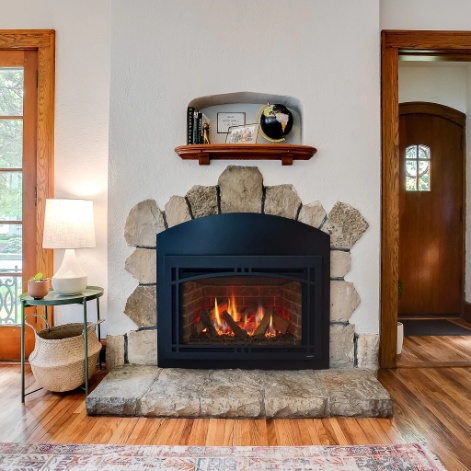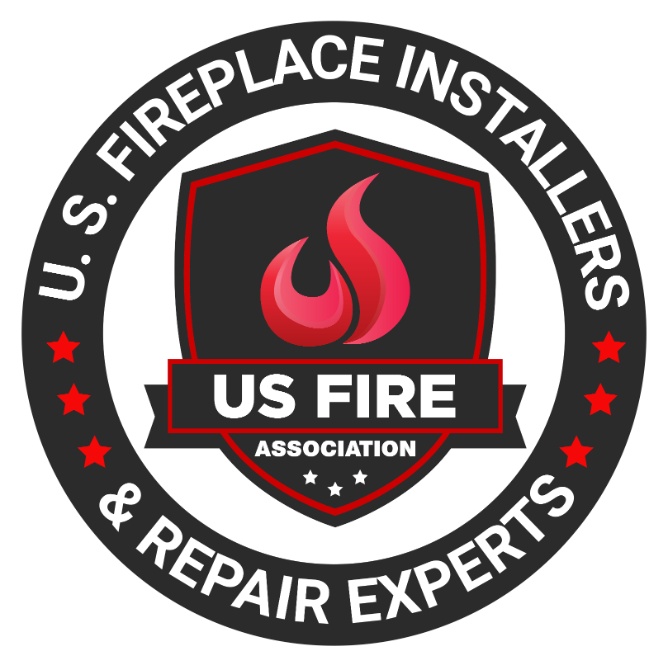Table of Contents
Fireplaces have long been a staple in homes, offering warmth, ambiance, and aesthetic appeal. But, when is it appropriate to add a fireplace in a home?
With different types of fireplaces available, from wood-burning to gas and electric, homeowners often wonder which option is best for their space.
We will explore the various types of fireplaces, the benefits of having one in a home, factors to consider when adding one, and when it is appropriate to incorporate a fireplace into your living space.
Whether you’re looking to cozy up on a chilly night or increase your home’s value, a fireplace can be a valuable addition to any home.
What Is a Fireplace?
A fireplace is a structure typically made of brick, stone, or metal that is designed to contain a fire.
It is commonly found in the living room of a home and serves as a source of warmth and ambiance.
Fireplaces play a crucial role in home design, often acting as a focal point that enhances the overall aesthetic of a room.
The installation process involves careful consideration of heating efficiency and safety measures.
This ensures that the fireplace not only looks stunning but also functions effectively.
In addition to providing heat during colder months, fireplaces contribute significantly to creating a cozy atmosphere.
This makes them popular features in interior design.
By incorporating design principles such as symmetry, proportion, and material selection, a fireplace can elevate the visual appeal of a space and set the tone for a welcoming environment.
What Are the Different Types of Fireplaces?
There are various types of fireplaces available for homes, ranging from traditional wood-burning fireplaces to modern and energy-efficient options such as gas and electric fireplaces.
Traditional fireplaces, like those that burn wood, are known for their cozy and rustic charm.
They offer a traditional ambiance and crackling sounds that many homeowners enjoy.
On the other hand, modern gas and electric fireplaces provide convenience and efficiency.
They often feature remote controls and adjustable heat settings.
These contemporary options are not only stylish but also environmentally friendly, as they produce fewer emissions and can be more energy-efficient.
Homeowners can choose from a wide range of styles and designs to match their décor, whether opting for a classic mantelpiece or a sleek wall-mounted unit.
Wood-burning Fireplaces
Wood-burning fireplaces are a classic choice for homeowners seeking a traditional heating source and cozy ambiance in their living spaces.
The crackling sounds of the burning wood and the mesmerizing dance of the flames create a warm and inviting atmosphere.
This is perfect for relaxing evenings or gatherings with loved ones.
In addition to providing comfort and warmth, wood-burning fireplaces also add a touch of rustic charm to any room, enhancing its aesthetics.
While maintaining these fireplaces may require regular cleaning of ashes and chimney inspection, many people appreciate the natural, earthy scent that comes with burning real wood.
It’s important to consider the availability and sustainability of wood sources for fuel.
However, the timeless appeal and functionality of a wood-burning fireplace make it a desirable feature in any home.
Gas Fireplaces
Gas fireplaces offer a modern and convenient alternative to traditional wood-burning models.
They provide efficient heating and stylish decor options for contemporary homes.
Their easy operation allows for quick and hassle-free use, with no need to constantly tend to a fire or clean up ashes.
Gas fireplaces are known for their cleanliness, as they produce no soot, ash, or smoke.
This makes them a low-maintenance heating solution.
The design versatility of gas fireplaces is another attractive feature.
Homeowners can choose from a wide range of styles to complement their decor and create a cozy ambiance.
Electric Fireplaces
Electric fireplaces are a popular choice for homeowners seeking ambiance and heating without the need for venting or fuel storage.
They offer versatile decor options and efficient heating solutions.
These fireplaces are known for their ease of installation, as they can simply be plugged into a standard outlet.
This makes them a convenient option for adding warmth and style to any room.
Electric fireplaces are extremely safe, with no open flames or hot surfaces.
This provides peace of mind to families with children and pets.
The design flexibility of electric fireplaces allows them to be easily integrated into various spaces.
They enhance the overall decor while offering the comforting glow of a fire.
They not only create a cozy ambiance but also add value to a property.
This is achieved by creating a focal point that improves the aesthetic appeal and comfort of the room.
What Are the Benefits of Having a Fireplace in a Home?
Having a fireplace in a home offers numerous benefits, including providing warmth, creating a cozy ambiance, enhancing comfort, and potentially increasing the property’s value.
The presence of a fireplace serves as a focal point in the living space and adds a touch of elegance and charm.
Gathering around the crackling fire with family and friends brings a sense of togetherness and creates lasting memories.
Beyond its aesthetic appeal, a well-maintained fireplace can add significant resale value to a property.
This appeals to potential buyers seeking both practicality and luxury in a home.
Owning a fireplace is not just a functional investment but a valuable asset that adds warmth, comfort, and style to any living environment.
Provides Warmth and Comfort
One of the key benefits of having a fireplace in a home is the warmth it provides.
This creates a comfortable environment during colder seasons.
Along with the practical heating aspect, fireplaces also enhance the overall ambiance of a room.
The soothing crackling sound of burning wood, the flickering flames casting a warm glow across the space, and the comforting smell of a wood fire all contribute to a cozy atmosphere.
This promotes relaxation and connection.
Beyond just the physical warmth, a fireplace can transform the entire layout of a room.
It becomes a focal point that brings family and friends together, making it a popular gathering spot for conversations and shared moments.
Adds Ambiance and Aesthetics
A fireplace adds ambiance and enhances the aesthetics of a living space.
It creates a focal point that complements the overall decor of the room.
It can serve as a versatile design element, adding warmth and character to any space.
When choosing a fireplace, consider the different styles available, such as traditional, modern, or rustic.
This aligns with the design theme of the room.
The materials used, whether it be sleek marble, cozy brick, or elegant wood, play a key role in defining the fireplace’s style and its integration into the decor.
The placement of the fireplace within the room also impacts the overall ambiance.
This allows for strategic positioning to maximize visual appeal and functionality.
Can Be Used as a Backup Heat Source
In addition to its primary function, a fireplace can serve as a reliable backup heat source during emergencies or when conventional heating systems are unavailable.
One of the key advantages of having a fireplace as a secondary heating option is its efficiency in maintaining warmth and comfort when needed most.
In situations where power outages occur or heating systems fail, a fireplace can provide a steady source of heat.
This makes it a valuable asset for homeowners.
By implementing energy-efficient practices such as using seasoned wood and ensuring proper ventilation, the fireplace can be utilized effectively while reducing energy consumption.
Having a diverse range of heating sources, including a fireplace, offers flexibility and peace of mind in ensuring a comfortable living environment.
What Are the Factors to Consider When Adding a Fireplace in a Home?
Several factors should be considered when adding a fireplace to a home.
These include the available space, budget constraints, installation costs, and ongoing maintenance requirements.
When deciding to add a fireplace, one must carefully evaluate the room layout.
This ensures it can accommodate the necessary clearances and venting requirements.
It’s essential to factor in the cost-effectiveness of different fireplace options, like gas, electric, or wood-burning variants, to align with the available budget.
Engaging a qualified contractor for the construction and installation process is crucial.
This ensures adherence to safety guidelines and local building codes.
Obtaining the necessary permits for the fireplace addition is also a critical step.
This helps avoid any legal issues down the road.
Available Space
The first factor to consider when adding a fireplace is the available space in the room.
It’s important to assess how the fireplace will fit into the property’s layout.
Assessing the room dimensions is crucial to determine the most suitable location for the fireplace.
An architect can help make necessary layout adjustments to accommodate the fireplace while maintaining a harmonious overall room layout.
Safety distances from combustible materials must also be considered to ensure the fireplace meets regulations.
Integrating the fireplace design seamlessly into the room can add value to the property and enhance its overall aesthetic appeal.
Budget
Another critical factor is the budget allocated for the fireplace project.
This includes considering both the initial cost of installation and the long-term investment value for the property.
When embarking on a fireplace project, homeowners need to weigh the upfront expenses of purchasing the unit, installation costs, and potential maintenance fees.
Opting for a cost-effective fireplace option, such as a gas or electric model, can help manage the initial investment.
Ensuring proper maintenance and servicing of the fireplace can prevent unexpected repair costs down the line.
It’s essential to factor in how the addition of a fireplace can enhance the overall resale value of the property.
This makes it a worthwhile consideration for those looking to increase equity in their home.
Local Building Codes and Regulations
Adhering to local building codes and regulations, obtaining necessary permits, and following safety guidelines are essential steps when adding a fireplace to a home.
Failure to comply with these regulations can result in safety hazards and legal consequences.
Contractors play a crucial role in ensuring that the fireplace installation meets all the necessary standards.
Before the installation process, inspections should be scheduled.
This verifies that the chimney, hearth, and overall structure are in alignment with safety codes.
Proper documentation of permits and adherence to safety standards are important for protecting the household.
This is also crucial for potential resale value and insurance coverage.
When Is It Appropriate to Add a Fireplace in a Home?
Adding a fireplace to a home is appropriate during construction or renovation projects.
This is especially true when homeowners seek to enhance the property’s value, aesthetics, or comfort.
The addition of a fireplace not only increases the visual appeal of a property but also creates a cozy and inviting atmosphere for family and guests alike.
Fireplaces offer a focal point for gatherings, providing warmth and ambiance.
This can transform a space into a comfortable sanctuary during colder months.
Renovation projects that include a fireplace often result in a higher resale value for the home.
This is because potential buyers are drawn to the charm and practicality of this timeless feature.
During Construction or Renovation
Integrating a fireplace during construction or renovation projects can significantly increase the property’s value.
It also contributes to overall home improvement goals.
The incorporation of a fireplace early in the construction process enhances the aesthetics of a property.
It also aligns the design aspects seamlessly.
By integrating the fireplace from the initial stages, it becomes easier to ensure that it complements the overall architectural style and interior design of the space.
This synergy between fireplaces, architecture, and interior design creates a harmonious ambiance.
It can elevate the visual appeal of the property and increase its allure to potential buyers.
This ultimately boosts its resale value.
When Looking to Increase Home Value
Adding a fireplace is a strategic choice when homeowners aim to increase the overall value of their property.
Fireplaces can enhance the appeal and desirability of a home.
Potential buyers are often drawn to properties with fireplaces due to the cozy ambiance they provide.
This makes the home feel warm and inviting.
Homes with fireplaces tend to stand out in the market.
This attracts a wider range of interested buyers.
This increased interest can lead to competitive offers and potentially drive up the resale value of the property.
Investing in a fireplace offers aesthetic benefits by adding a focal point to a room.
It also provides a practical heating source, adding to the overall appeal and functionality of the home.
Market trends consistently show that homes with fireplaces tend to command higher prices and attract more attention in the real estate market.
This makes them a worthwhile investment for homeowners looking to maximize their property value.
When Seeking Additional Heat Source
Homeowners may consider adding a fireplace when they require an additional heat source for enhanced comfort.
This is especially true during colder seasons when seeking energy-efficient heating solutions.
Fireplaces not only provide warmth but also serve as functional focal points within a home.
This contributes to a cozy ambiance.
By efficiently distributing heat, fireplaces help maintain a comfortable temperature throughout various living spaces.
With advancements in heating technology, modern fireplaces offer convenient features like programmable thermostats and zone heating.
This allows homeowners to control and customize their heating settings easily.
The versatility of fireplaces allows for their use across different seasons.
This provides both practical heating benefits in winter and aesthetic appeal in milder weather.
When Wanting to Enhance Home Aesthetics
For homeowners focusing on enhancing home aesthetics and creating a stylish living space, adding a fireplace can be a key element.
This elevates the overall decor and ambiance.
Fireplaces serve as more than just a source of warmth; they are iconic pieces that can completely transform the look and feel of a room.
The style of a fireplace can greatly influence the overall aesthetic of a space.
Whether it’s a sleek, modern design in a contemporary setting or a rustic stone fireplace in a cozy cabin-style room, the choice matters.
By integrating the fireplace design with the existing decor theme, homeowners can create a cohesive and inviting atmosphere.
This becomes a focal point for gatherings and relaxation.
Frequently Asked Questions
1. What types of fireplaces are available for homes?
There are several types of fireplaces, including traditional wood-burning, modern gas, and electric fireplaces. Each type offers unique benefits and aesthetic options for homeowners.
2. What are the benefits of having a fireplace in a home?
Fireplaces provide warmth, create a cozy ambiance, enhance comfort, and can potentially increase a home’s resale value.
3. How do wood-burning fireplaces compare to gas and electric fireplaces?
Wood-burning fireplaces offer traditional charm and ambiance, while gas and electric fireplaces are more convenient, cleaner, and often easier to operate.
4. What factors should I consider when adding a fireplace to my home?
Consider available space, budget, installation costs, ongoing maintenance requirements, and local building codes when adding a fireplace.
5. Is it appropriate to add a fireplace during construction or renovation?
Yes, adding a fireplace during construction or renovation enhances aesthetics, improves property value, and integrates seamlessly into the overall design.
6. Can a fireplace serve as a backup heat source?
Yes, a fireplace can provide reliable backup heating during power outages or when conventional heating systems fail, ensuring comfort during emergencies.
7. What maintenance do fireplaces require?
Fireplaces need regular cleaning, inspection of the chimney, and maintenance of components to ensure safe operation and efficiency.
8. How do I choose the right fireplace style for my home?
Choose a fireplace style based on your home’s décor theme, considering options like traditional, modern, or rustic designs and the materials used.
9. Are electric fireplaces safe for homes with children and pets?
Yes, electric fireplaces are safe as they do not have open flames or hot surfaces, making them a suitable option for families with children and pets.
10. Can adding a fireplace increase my home’s value?
Yes, adding a fireplace can enhance a property’s appeal and desirability, often leading to a higher resale value in the real estate market.
Latest Articles

What Is An NG (Natural Gas) Indicator And Why You Need It For Your Fireplace
Table of Contents1 Understanding Natural Gas Fireplaces2 What is an NG Indicator?3 Importance of NG Indicators for Safety4 Types of NG Indicators5 Installation and Maintenance of NG Indicators6 Signs of a Faulty NG Indicator7 Frequently Asked Questions Natural gas fireplaces are a favored option among numerous homeowners due to their convenience and effectiveness. But, what is an NG (Natural Gas) indicator and why you need it for your fireplace? It is imperative to comprehend how they function and the significance of having an NG (Natural Gas) indicator for safety purposes. This article delves into the definition and significance of NG indicators. We will discuss the potential hazards associated with the absence of one and the various types of indicators accessible. Also, we will discuss installation and maintenance recommendations, and methods to recognize and rectify issues with malfunctioning indicators. Stay well-informed and ensure the safety of your home by referring to this exhaustive guide. Understanding Natural Gas Fireplaces Natural gas fireplaces serve as an efficient and convenient heating option for numerous households. They utilize natural gas as a fuel source to deliver consistent warmth and ambiance. How They Work and Why They Need NG Indicators The operation of natural gas fireplaces involves igniting natural gas to generate heat. This process requires diligent monitoring to ensure both safety and efficiency, a task facilitated by the use of NG indicators. NG indicators play a critical role in detecting potential gas leaks. They enable residents to promptly address and mitigate any associated hazards. Through continuous monitoring of gas levels and providing timely warnings and alerts, NG indicators uphold a secure indoor environment. It is imperative to ensure that these indicators function properly to facilitate the effective operation of natural gas fireplaces. This helps mitigate the inherent risks linked to gas leaks. What is an NG Indicator? An NG indicator is a specialized device equipped with advanced sensors and technology. It is specifically designed to detect natural gas leaks and monitor gas pressure in appliances, such as fireplaces. Definition and Purpose The NG indicator functions as a detector that monitors gas appliances for potential leaks. It provides essential functionality to ensure safety in households utilizing natural gas. These detectors play a crucial role in protecting residences by notifying occupants of dangerous gas leaks long before they escalate into perilous situations. Through continuous monitoring of gas levels in the vicinity, NG indicators offer an additional layer of protection. This is particularly important in properties that rely on gas-operated fireplaces or stoves. These devices not only help avert potential disasters but also enhance the overall peace of mind of homeowners. They assure them that their living spaces are equipped with reliable safety features. Importance of NG Indicators for Safety Natural gas indicators are essential for maintaining safety in households equipped with natural gas appliances. These devices serve as a proactive measure to promptly detect gas leaks. This offers homeowners a sense of security and assurance. Potential Dangers of Not Having an NG Indicator The absence of an NG indicator in residences equipped with natural gas appliances can pose significant hazards. This includes the risk of undetected gas leaks , carbon monoxide poisoning , and pilot outages that may lead to dangerous situations. These potential risks can profoundly impact indoor air quality. They directly influence the health and safety of individuals residing in the household. Undetected gas leaks can go unnoticed, gradually permeating the air and creating a potentially explosive environment. Insufficient ventilation from undetected exposure to carbon monoxide can lead to serious health complications. These range from mild symptoms such as dizziness to fatal poisoning. Without proper monitoring from an NG indicator, families are left susceptible to these concealed threats. This underscores the critical importance of implementing proactive measures to mitigate such risks. Types of NG Indicators Indicators for Natural Gas (NG) are available in diverse types. Each presents distinct detection capabilities tailored to specific requirements, encompassing both manual and automated alternatives. Manual vs. Automatic Indicators Manual NG indicators require user intervention for monitoring gas levels and identifying leaks. On the other hand, automatic indicators employ sophisticated technology to deliver continuous, real-time monitoring. This heightened efficiency and oversight enhance safety protocols. Conventional manual indicators rely on individuals to physically inspect and evaluate gas levels periodically. This renders them more susceptible to human errors. Conversely, automatic indicators feature sensors capable of promptly detecting even the most minute fluctuations in gas levels. This establishes a more dependable and precise monitoring mechanism. Automatic indicators can activate alerts and shut-off systems upon detecting a leak. This ensures immediate action to avert potential hazards. This advanced technology enhances safety protocols and instills a sense of command and assurance among users. Installation and Maintenance of NG Indicators The reliable and accurate performance of NG indicators necessitates proper installation and consistent maintenance. This often entails professional installation and adherence to recommended service guidelines. Proper Installation and Regular Maintenance Tips The proper installation of NG indicators involves adhering to the specifications in the user manual. Maintenance protocols entail strict adherence to a predetermined maintenance schedule to ensure sustained operational efficiency. During the installation phase, it is imperative to verify that the NG indicators are securely affixed in the designated location as stipulated by the manufacturer. Crucial steps include confirming power source compatibility and ensuring proper grounding of the device to optimize performance. Calibration of the indicator must be executed meticulously to ensure precise readings. Regarding maintenance, essential practices include regular inspection for signs of wear, thorough cleaning of the indicator components, and routine functionality tests. By allocating time to a consistent maintenance regimen, the NG indicator can operate with optimal efficiency over an extended duration. Signs of a Faulty NG Indicator Recognizing indicators of a malfunctioning NG indicator is essential for upholding safety and performance standards. Inaccuracies and detection issues can undermine the efficacy of these devices. Identifying and Addressing Issues The process of identifying and addressing issues related to NG (natural gas) indicators requires a systematic troubleshooting approach. This ensures their optimal performance

What You Need To Know About Gas Log Set Safety And Installation Considerations
Table of Contents1 Understanding Gas Log Sets2 Safety Considerations for Gas Log Sets3 Installation Guidelines for Gas Log Sets4 Maintaining and Troubleshooting Gas Log Sets5 Frequently Asked Questions Gas log sets are a favored option among homeowners seeking to enjoy the comfort and atmosphere of a conventional fireplace without the inconvenience of wood. This article tells you what you need to know about gas log set safety and installation considerations. Before incorporating one into your residence, it is imperative to understand the safety considerations associated with their use. This discussion delves into the potential hazards linked with gas log sets. It presents crucial precautions to uphold the safety of your home. Also, it outlines proper installation procedures and offers insight into common errors to avoid. Finally, it provides advice on maintenance and troubleshooting. Gain comprehensive knowledge on gas log set safety and installation considerations. Understanding Gas Log Sets Comprehending gas log sets is essential for individuals seeking to elevate their fireplace experience, and for gas lag set safety and installation. These heating appliances can operate on either natural gas or propane. In addition, they are available in a range of styles, including vented, ventless, and vent-free options. They provide an array of benefits and customization opportunities through various fireplace accessories. What are Gas Log Sets? Gas log sets are meticulously crafted artificial logs. They are designed to imitate the appearance and functionality of authentic wood logs within fireplaces. These gas log sets typically consist of ceramic or refractory concrete logs that have been skillfully molded and painted. This allows them to replicate the natural grain and texture of real wood. The logs are arranged in various configurations within the fireplace. They establish a realistic and welcoming ambiance. In addition to the logs, gas log sets often include fireplace accessories such as glowing embers. Accessories also include decorative stones, and even pine cones to enhance the overall aesthetic appeal. Homeowners can select from an array of placement options. These include traditional wood stack, cascading driftwood, or a contemporary geometric arrangement. Homeowners can align their preferred style and design preferences. Safety Considerations for Gas Log Sets Safety considerations for gas log sets are of utmost importance to guarantee a secure and pleasant fireplace experience. It is essential to address potential hazards such as carbon monoxide exposure, gas leaks, and fire safety to maintain a safe environment for homeowners. Potential Hazards and Precautions Gas log sets come with potential hazards that must be taken seriously, including the risks of gas leaks, carbon monoxide poisoning, and fire incidents. It is imperative to establish and adhere to rigorous safety measures to ensure the well-being of individuals and properties involved in the use of gas log sets. Gas leaks represent a significant hazard when utilizing gas log sets. They can result in the accumulation of combustible gas within the premises, heightening the possibility of explosions or fires. Carbon monoxide, an insidious gas generated during incomplete combustion, poses a grave threat due to its colorless and odorless nature, making it undetectable without proper monitoring. To address these risks effectively, it is vital to install carbon monoxide detectors and gas leak sensors in the vicinity of the gas logs. Routine maintenance checks on the gas log system, including cleaning and inspection procedures, are critical to ensure safe operations and the prompt identification of potential issues. In case of a gas leak or suspected presence of carbon monoxide, immediate evacuation of the affected area is paramount, followed by prompt contact with emergency services. Recognizing the distinct odor of rotten eggs associated with natural gas can serve as an early warning sign, prompting swift actions to avert any potential accidents. Installation Guidelines for Gas Log Sets The installation of a gas log set necessitates meticulous planning and strict adherence to specific guidelines. This includes verifying a secure gas connection, ensuring proper gas lines are in place, and complying with local building codes. Often, the complexity of these requirements may require the expertise of a certified technician. Proper Installation Techniques The appropriate installation procedures for gas log sets involve the secure connection of gas lines, meticulous adherence to installation manuals, and strict compliance with local building codes. It is imperative to prioritize the guarantee of secure gas connections to avert leaks and potential safety hazards. During the installation of gas log sets, utilizing suitable sealants and fittings is essential to establish a tightly sealed connection. The correct installation of gas lines is critical for both the safety and operational efficacy of the gas log set. Reference to the installation manual is highly advisable for detailed, step-by-step guidance to prevent inaccuracies and ensure the successful establishment of the gas log set. Consistently adhering to building codes and regulations upholds safety standards. Seeking guidance and confirmation from a certified technician before and after installation can offer invaluable support and assurance throughout the process. Common Installation Mistakes to Avoid It is imperative to avoid common installation errors to ensure the secure and effective operation of gas log sets. This includes verifying proper gas connections and compliance with building codes. Improper gas connections can result in leaks and potential hazards, underscoring the importance of verifying the tightness and correct alignment of all fittings. Failure to adhere to building codes can lead to structural complications, penalties for non-compliance, or even safety concerns. To prevent these oversights, it is advised to consult the manufacturer’s installation guidelines and strictly adhere to local regulations. Engaging a certified technician for the installation of gas log sets guarantees that the procedure is carried out accurately and securely. This provides assurance that the system is functioning as intended. Maintaining and Troubleshooting Gas Log Sets Regular maintenance and troubleshooting of gas log sets are imperative to uphold their optimal performance and safety. This includes thorough examination of the pilot light, pilot assembly, and other gas appliances to preserve heating efficiency and promptly resolve any arising issues. Tips for Maintenance and Repair Ensuring the proper maintenance of your gas log set necessitates conducting

Key Considerations For Using Compressed Liquid Propane In Fireplace Installation
Table of Contents1 What is Compressed Liquid Propane?2 Benefits of Using Compressed Liquid Propane in Fireplaces3 Safety Precautions for Installing Compressed Liquid Propane Fireplaces4 Installation Process for Compressed Liquid Propane Fireplaces5 Maintenance and Care for Compressed Liquid Propane Fireplaces6 Alternative Fuel Options for Fireplaces7 Frequently Asked Questions If you are contemplating the use of compressed liquid propane in your fireplace installation, this discussion will delve into the advantages of adopting this alternative fuel option. These benefits include enhanced efficiency, cost savings, and important safety precautions to consider. Furthermore, a detailed step-by-step guide on the installation process will be provided, along with recommendations for maintenance and care. A comparison of various fuel options for fireplaces will also be conducted to assist you in making an informed decision. We encourage you to stay engaged to gain insights into optimizing your fireplace’s capabilities with compressed liquid propane. What is Compressed Liquid Propane? Compressed Liquid Propane is a versatile energy source contained in a high-pressure propane tank. It finds extensive utility in both residential and commercial settings, prominently including fireplaces. Recognized for its convenience and efficiency, Compressed Liquid Propane emerges as a favored option for heating residential spaces and facilitating culinary pursuits across various environments. Additionally, it serves as a viable fuel substitute in vehicular contexts, portable cooktops, and outdoor grilling scenarios due to its propensity for clean combustion. The attribute of portability, coupled with ease of storage, positions Compressed Liquid Propane as an optimal energy source for individuals residing off the conventional grid. It is also great for engaging in outdoor activities such as camping and recreational vehicle (RV) travel. Moreover, the high energy density inherent to Compressed Liquid Propane renders it a dependable choice for sustaining generators during instances of power disruptions. Benefits of Using Compressed Liquid Propane in Fireplaces Utilizing Compressed Liquid Propane for fireplace installation presents several benefits. These include enhanced fuel efficiency, convenience, cost-effectiveness, and a favorable environmental footprint. These attributes render it a recommended option for heating solutions, applicable to both on-grid and off-grid settings. Efficiency and Cost Savings The utilization of Compressed Liquid Propane in fireplaces offers significant advantages, notably in terms of high fuel efficiency and cost-effectiveness. These attributes are underscored by the exceptional BTU rating and overall heating efficiency of Compressed Liquid Propane. The elevated fuel efficiency exhibited by Compressed Liquid Propane fireplaces necessitates less fuel to generate the same level of heat compared to traditional wood-burning fireplaces or electric heating systems. Consequently, homeowners can realize cost savings on their heating expenditures over an extended period. Moreover, the clean-burning characteristics of propane minimize maintenance costs linked to soot and ash cleanup. This further enhances the cost-effectiveness of employing propane fireplaces. Safety Precautions for Installing Compressed Liquid Propane Fireplaces Ensuring safety is of utmost importance during the installation of Compressed Liquid Propane fireplaces. This requires strict adherence to safety regulations, meticulous attention to proper ventilation requirements, careful control of ignition sources, and the incorporation of carbon monoxide and gas leak detection systems. Important Safety Measures Essential safety protocols for the installation of Compressed Liquid Propane fireplaces encompass adherence to fire safety regulations. Engaging in professional assessments and employing sophisticated gas leak and carbon monoxide detection mechanisms is crucial. Professional evaluations play a critical role in identifying any prospective hazards or irregularities within the fireplace infrastructure. These assessments are vital in ensuring the operational integrity of all components and compliance with safety protocols. Routine inspections serve to forestall potential fire incidents, gas discharges, or carbon monoxide emissions that could pose significant threats to both the property and individuals in the vicinity. The utilization of advanced gas leak and carbon monoxide detection systems serves as an additional safeguard by promptly notifying occupants of any elevated levels of these hazardous gases. Installation Process for Compressed Liquid Propane Fireplaces The installation procedure for Compressed Liquid Propane fireplaces encompasses several critical steps. These include: Adhering to installation guidelines Correctly positioning the propane tank Ensuring precise gas line installation Optimizing heat output Monitoring pressure regulation Establishing the pilot light Step-by-Step Guide The installation process of Compressed Liquid Propane fireplaces involves a systematic approach. This begins with the construction of the firebox, followed by the installation of the gas control valve, setup of the ignition system, design of the flue, and verification of a suitable combustion air supply. The construction of the firebox assumes critical importance as it serves as the foundation of the fireplace structure. It securely holds the combustible materials in place. Subsequently, the gas control valve plays a key role in managing the propane flow, guaranteeing safe and efficient operation. The installation of the ignition system facilitates convenient and reliable fire initiation. Designing the flue is a necessary step to direct exhaust gases outside, thus preventing their accumulation indoors. Moreover, ensuring a proper combustion air supply is essential to sustain optimal burning conditions and enhance fuel consumption efficiency. Each component contributes significantly to the functionality and safety of the fireplace installation process. This underscores the importance of meticulous attention to detail and adherence to established protocols. Maintenance and Care for Compressed Liquid Propane Fireplaces Consistent maintenance and attention to Compressed Liquid Propane fireplaces are imperative to guarantee their optimal functionality. This includes adherence to prescribed maintenance protocols, regular chimney upkeep, prevention of soot accumulation, and scheduling of routine propane deliveries and professional inspections. Tips for Keeping Your Fireplace in Good Condition For the maintenance of your Compressed Liquid Propane fireplace, it is essential to conduct regular checks on ignition sources. Monitor flame appearance, clean the gas burner and pilot assembly, and verify the correct operation of the safety shut-off valve. The inspection of ignition sources requires a detailed examination of the electronic igniter. This helps identify any signs of damage or corrosion and ensures proper sparking upon activation. Monitoring flame appearance involves observing a consistent blue flame with minimal flickering, which signifies efficient combustion. Cleaning the gas burner and pilot assembly can be performed using a soft brush or compressed air to eliminate any dirt or debris that may
